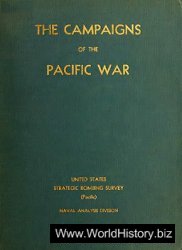But hardship came most broadly due to the shortages of food, clothing,
and other necessities imposed on the civilians of the belligerent countries.
Germany was the first to face the problem of food shortages, then suffered
the most. Before the war, that country had produced most of its own food,
even exporting large quantities of foodstuffs like rye and beet sugar. But the
needs of the army soon meant lesser supplies of things like meat for
civilians, and the British blockade deprived German agriculture of vital
fertilizers. By late December 1914, voluntary food conservation gave way,
at least in Berlin, to food rationing. Within a year, British naval power was
having a sharp effect on Germany's food supply.
Throughout 1915, German civilians felt the pressure of the war in the
bread supply. Bread rationing was established in Germany in the first
January of the war. By the end of 1915, it was set in many regions at half a
pound daily per person, one-third less than what Germans had consumed
in peacetime. The bread itself was "war bread," adulterated with potato
flour. In 1916 most foods were rationed, especially staples such as meat,
potatoes, and milk. From May onward, the director of the newly established
War Food Office had increasing authority over what every German ate. The
supply of milk dwindled, and fats like butter and cooking oil, consumed
generously in all German homes before the war, became increasingly hard
to obtain. Ersatz (substitute) foods, many of them hideously unappetizing,
appeared and took the place of real coffee and real eggs.
Civilians wandering the countryside in search of food became a common
sight in Germany and in Austria as well. Buying directly from farmers was
one way to circumvent rationing. The practice became so widespread that
officials in some regions refused to allow outsiders to visit their farm
villages. Another way was to patronize the black market or high-priced
restaurants. Germany's population buzzed with stories of the unfairness of
a system that allowed the rich to evade the worst effects of the food shortage.
In the last two years of the war, food shortages became critical. A
witness to the food crisis in the Central Powers was George Abel Schreiner.
A naturalized American citizen who had been born in Germany,
Schreiner served as a war correspondent for America's Associated Press.
He arrived in Germany at the start of the conflict and remained in central
Europe until the United States entered the war. Schreiner's picture of
deprivation in Germany and Austria included a discussion of how the food
supply was distorted from early in the war as the well-off hoarded as much
nourishment for themselves as possible. His description of food lines
"to eat under government supervision," as he put it—showed the anguish
of people dependent upon seemingly callous governments for their meager
nourishment.'
A poor potato harvest deprived Germans of their staple food in the winter
of 1916-1917. It was replaced by turnips, even as the bread ration was
reduced and fruits and vegetables nearly disappeared. The government
lowered the bread ration again in May 1918. Two months later, the equally
crucial potato ration was reduced by half. When the Armistice arrived in
November 1918, it was greeted by a nation in which everyone was hungry
and most were malnourished. The effect of years of poor food raised the
mortality rate in the elderly. Poorly nourished youngsters were vulnerable
victims to diseases like tuberculosis.
By contrast, the populations of Britain and France avoided serious food
shortages during the first three years of the war. France was Europe's most
prosperous and self-contained agricultural nation. Britain, so long as it
controlled the sea lanes, could be assured of a food supply, even though
British agriculture had so dwindled since the 1870s that it provided only 20
percent of the wheat and something more than half the meat the population
ate. The major concern at first was the rise in food prices: meat, for example,
cost 40 percent more in Britain after the war had gone on for just a year.
Food difficulties appeared in Britain only at the close of 1 9 1 6. Adulterated
"war bread" now replaced the standard loaf in the shops, and the government
made appeals for a cut in meat consumption and for the cultivation of private
food gardens. Alcoholic beverages were weaker than their prewar counterparts,
and brandy was obtainable only if your doctor prescribed it.
As the submarine menace began to sever Britain's sea links with the
world in 1917, the government moved rapidly to arrest the danger. Bread
consumption fell, not as a result of formal rationing but in the wake of a
government propaganda appeal. British agriculture revived under a system
of government subsidies. Compulsory rationing—with only tea, cheese, and
bread excepted—was put in place early in 1918.
In Fnce, the food shortage also arrived only late in the conflict. War
bread, called "national bread," appeared in May 1916. By year's end,
however, lines in front of grocery stores were lengthening, and the government
began to plan heavier restrictions. In 1917 they arrived as France also
began to suffer shortages and price rises. Sugar was rationed, milk was often
unobtainable in cities at any price, and, in a blow to every French home,
"national bread" became even less palatable than the version of the previous
year. In November even this had to be rationed.
|
|
||||||||
|
Www.WorldHistory.Biz
Sundries
 Contact Contact
|
 
11-08-2015, 16:59
FOOD SHORTAGES AND RATIONING
  |
|||||||
 |
 |
 |
 |
|||||
|
||||||||

 World History
World History





